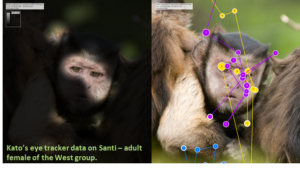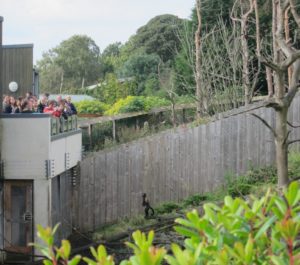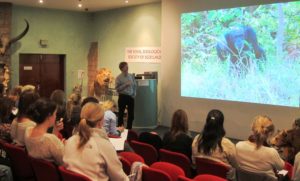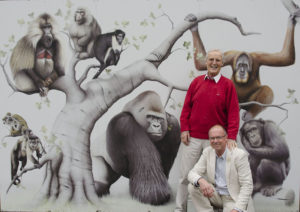Study of a Chimpanzee Integration and their Social Networks

Since mid 2012 Living Links and the Budongo Trail at Edinburgh Zoo officially became a research consortium. Dr Katie Slocombe of SPRG is the Scientific Director of the Budongo Chimpanzee Research Centre and has a long standing research interest in Edinburgh Zoo’s chimpanzees as well as the chimpanzees in the Budongo forest in Uganda.
Over the years Katie and her colleagues have had the opportunity to conduct multiple studies with our chimpanzees and recently one of these projects has been published in the American Journal of Primatology.
Schel, M.A., Rawlings, B., Claidiere, N., Wilke, C, Wathan, J, Richardson, J, Pearson, S, Herrelko, E, Whiten, A., and Slocombe, K (2012). Network Analysis of Social Changes in a Captive Chimpanzee Community Following the Successful Integration of Two Adult Groups. American Journal of Primatology 00:1-13.
In May 2010, a new group of chimpanzees from Beekse Bergen Safari Park (Netherlands) arrived to the Budongo Trail, and these chimps were to be introduced to the existing population inhabiting this enclosure. Over the course of 3 months the new arrivals were successfully integrated with the original population.
To aid introductions the Budongo Trail had been designed in such a way that the keepers were able to slowly introduce the chimps to each other by using a multi-pod system (Figure 1). The introductions were conducted at the pace that was dictated by the chimpanzees’ behaviours towards each other while they were physically separated. The keepers’ expertise knowledge of the individuals and their behaviour was key to the successful integration. Table 1 depicts the demographics of the individuals being introduced and Figure 2 shows the process of the integration.
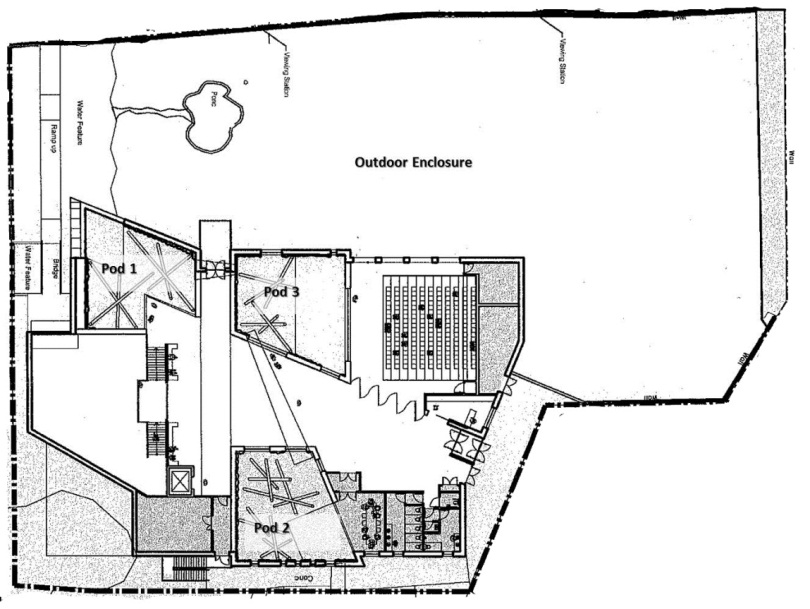
Fig. 1 – An enclosure map depicting the multi-pod system and the outdoor enclosure area.
Table 1 – Demographic information of the chimpanzees.
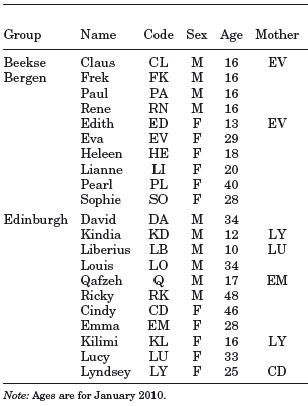
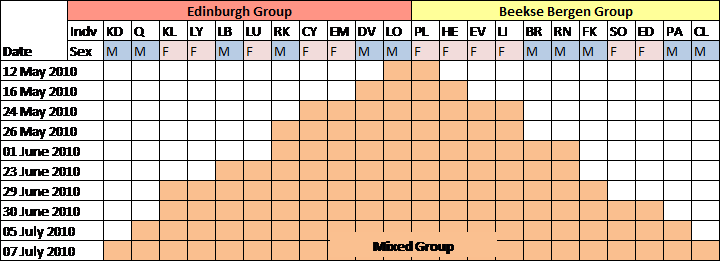
Fig 2. Illustration of the process of integration of individuals into the third mixed group. An orange shaded cell indicates that individuals left their original group and became part of the mixed group. The dominant males from each group (CL,PA,KD and Q) were introduced last.
In the paper the authors discuss the complexities of integrating two unrelated captive chimpanzee groups and they monitor the group dynamics throughout the integration process with the use of Social Network Analysis (SNA). SNA uses associations (eg. nearest neighbour) and interactions (eg. grooming) data to create a graphic representation (sociogram) of the social relationships within the group (Figure 3).
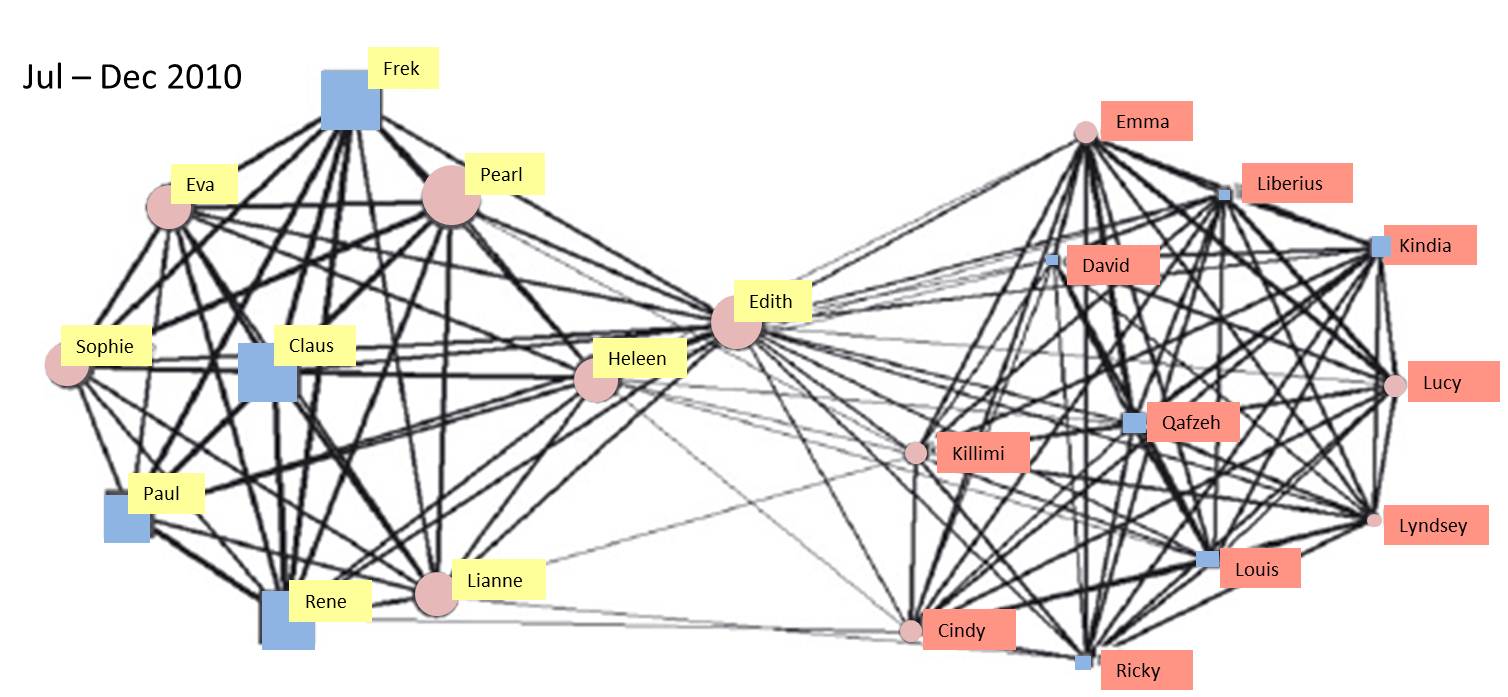
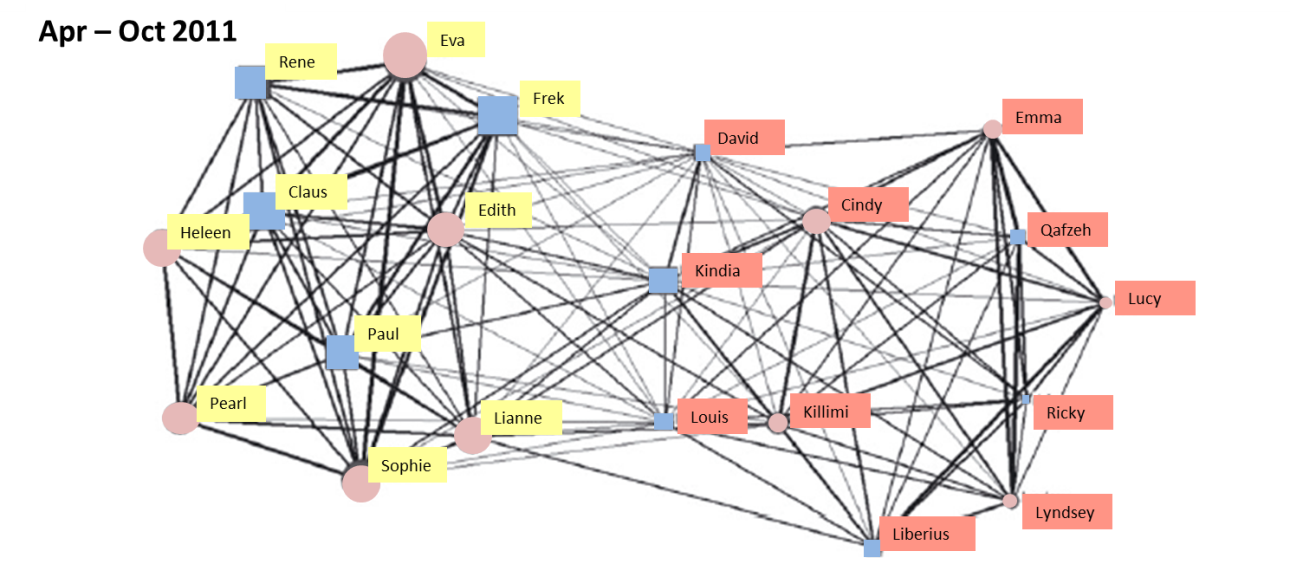
Fig 3 – Sociograms illustrating association patterns from the early and latter periods of integration. Males are shown as blue squares and females as pink circles. Edinburgh chimp names are highlighted in red and the Beekse Bergen chimps shown in yellow. The thickness of the link represents the strength of the association between two individuals and the size of the node represents how well connected that individual is within the entire network .
The sociograms show that in the early period of integration Edith, a 13 year old female from the Beekse Bergen group, had the strongest cross group associations, whereas in the latter period it was Kindia, a high-ranking 12 year old Edinburgh male.
The SNA data that has been collected and shown for this chimpanzee group is on-going so we may continue to monitor the slow process of social integration between two new chimpanzee groups. As you can see from the sociogram there is still a tendency for the chimps to associate with their original group members even though they have been living in the same large enclosure for more than a year. Over time will we see a more even mix of the two sub populations or will they continue to rely on old coalitions?
This research not only allows us a peek at the complexity of chimpanzee social systems but it may also be helpful in making welfare focused animal management choices. If we know the connectivity of each individual in the group we can then make predictions on how removals/additions to that population may play out, along with planning which individuals may need other individuals for social support in new situations.
For information about another chimpanzee project in the Budongo Trail please see a video interview with Katie about studying chimpanzee communication.
For more information on chimpanzee studies in the wild visit the Budongo Conservation Field Station site.










